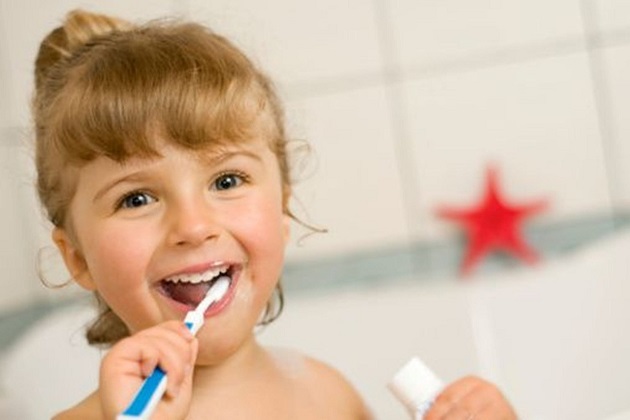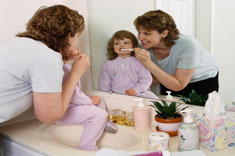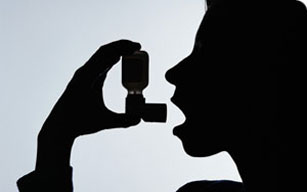Pediatric Dental Health
 Tooth decay is the single most common chronic childhood disease. According to a survey by the Centers for Disease Control and Prevention, nearly half of two-to-nine-year-olds in the U.S. suffer from untreated tooth decay. Nearly 80 percent of children will have at least one cavity by the time they finish high school.
Tooth decay is the single most common chronic childhood disease. According to a survey by the Centers for Disease Control and Prevention, nearly half of two-to-nine-year-olds in the U.S. suffer from untreated tooth decay. Nearly 80 percent of children will have at least one cavity by the time they finish high school.
Untreated dental disease can cause great suffering and contribute to lifelong health problems. That's why early and routine visits to your family dentist are so important.
There are daily health habits that everyone needs to practice, such as eating a proper diet, exercising, bathing, and sleeping. Caring for your mouth is as important as caring for the rest of your body. Cleaning teeth and gums removes a sticky film of plaque. Plaque contains harmful bacteria that can cause tooth decay. Brushing kids teeth for 2 minutes, 2x a day (watch the educational videos) - for healthier teeth, good breath, fewer cavities, and to avoid painful dental problems.
Caring for baby teeth is as important as caring for permanent teeth. Do not allow infants and toddlers to take a bottle to bed or to suck on one during naptime, unless it contains only water - it can lead to baby tooth decay. Prolonged exposure to juice or milk, through a bottle, can cause tooth decay. Processed foods, candy, chewable fruity snacks, juice boxes, sweetened cereal, breakfast bars, and of course, soda, all add to this problem and promote tooth decay in preschoolers.
- Do not use a bottle as a pacifier or sleep aid unless it contains only water.
- Pacifiers should not be cleaned by mouth or dipped in sweet liquids.
- Teach children to drink from a cup as they approach their first birthday.
- Wipe a baby's gums with a clean gauze pad after each feeding.
- Brush baby's first tooth gently with plain water.
- An infant's first oral exam should occur within six months after the first tooth erupts and before he or she has a first birthday.
- As your child gets older, talk to a dentist about proper brushing with fluoridated toothpaste, flossing, healthy diet and snacks, sealant application and protective mouth guards.
- Supervise young children as they brush and teach them to spit out -not swallow - toothpaste.

No Dental Coverage?
Parents who lack dental coverage for their children can apply for state health insurance programs through Westchester County’s Facilitated Enrollment Program by calling a health navigator at (914) 995-6350.
Families without dental insurance can visit these neighborhood health centers, where fees are adjusted based on family income:
Ossining Open Door
165 Main Street
Ossining, NY 10562
(914) 941-1263
Open Door Family Medical Center
5 Grace Church Street
Port Chester, NY 10573
(914) 937-8899
Greenburgh Health Center
295 Knollwood Road
Greenburgh, NY 10607
(914) 989-7600
Hudson River Community Health
1037 Main Street
Peekskill, NY 10566
(914) 734-8800
Mt Vernon Neighborhood Health Center
107 West 4th Street
Mt. Vernon, NY 10550
(914) 699-7200
Yonkers Community Health Center
30 South Broadway
Yonkers, NY 10701
(914) 968-4898
Resources for oral health:
- Children's oral health (CDC)
- The Basics of Fluoridation (CDC)
- Mouth Healthy (ADA)
Videos on dental health for children:
- YouTube videos on the importance of oral health (National Maternal and Child Oral Health Resource Center)
Brochures:
- Assorted Parent Educational Dental Brochures (American Academy of Pediatric Dentistry)



 Asthma is a chronic inflammatory disease of the airways. In the US, over 25 million people suffer from asthma. About 7 million of these people are children.
Asthma is a chronic inflammatory disease of the airways. In the US, over 25 million people suffer from asthma. About 7 million of these people are children.